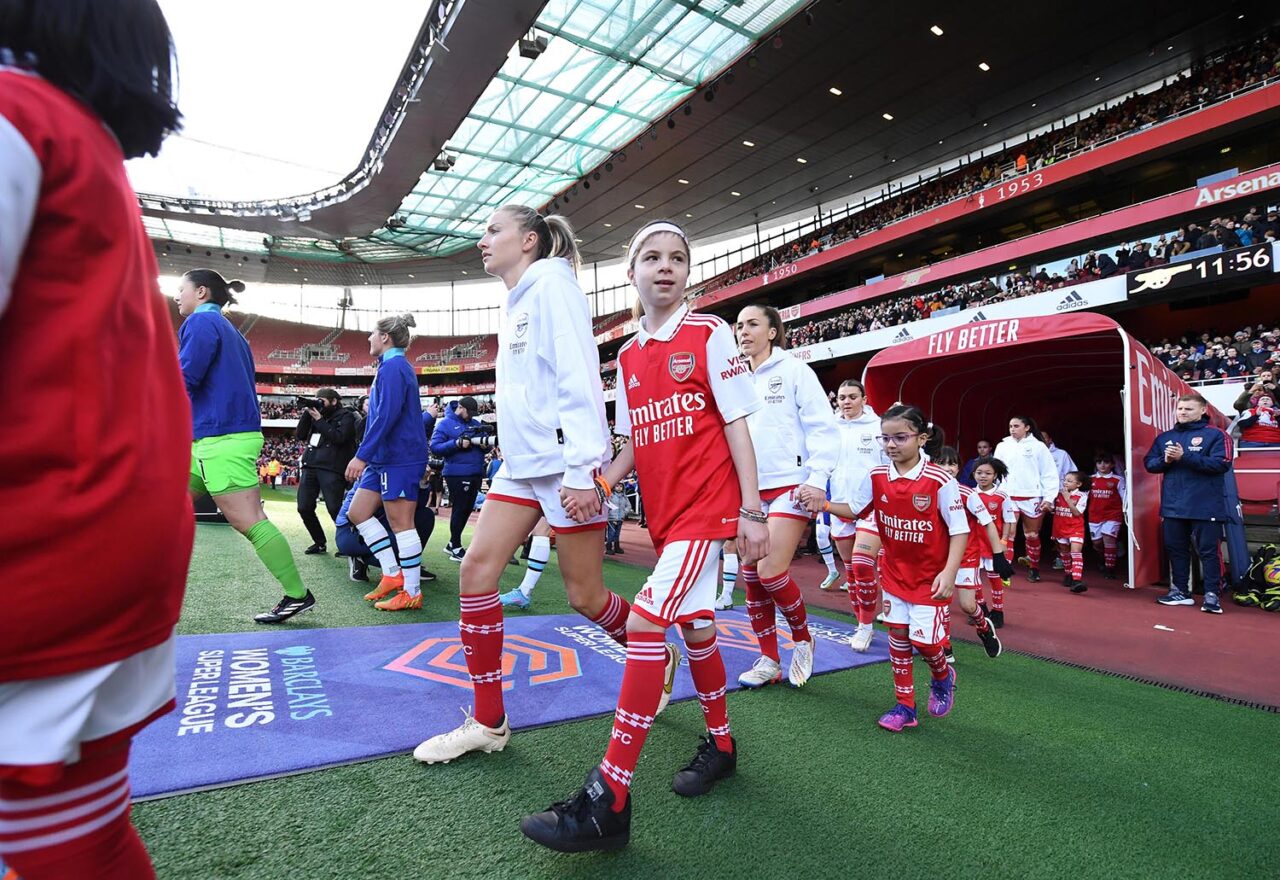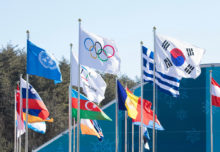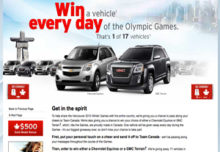Four insights on how women’s sports sponsors are working to level the playing field
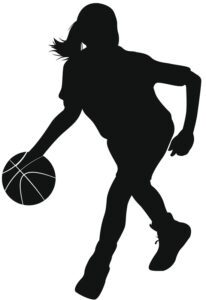 The phrase “a rising tide lifts all boats” isn’t often associated with competing brands. But when it comes to increasing visibility for women’s sports, sponsors are steadfast in their commitment to inspiring other brands to jump aboard.
The phrase “a rising tide lifts all boats” isn’t often associated with competing brands. But when it comes to increasing visibility for women’s sports, sponsors are steadfast in their commitment to inspiring other brands to jump aboard.
There’s no doubt that we’ve come a long way since Title IX. Female athletes are finally (finally!) making strides in the equal pay movement, and high-profile brands are giving more attention—and dollars—to the space at the local, national and global levels. In fact, women’s sports saw a 20-percent increase in brand partnerships over the last year, according to research from SponsorUnited.
But the work is far from over. Consider the Correct the Internet program, which was launched by DDB New Zealand in January. The campaign was designed to help eliminate bias and correct inaccuracies in internet search results, which often credit men with sports records held by women. A web search will show that, for instance, Cristiano Ronaldo has scored the most goals in international soccer—the record is actually held by a female player, Christine Sinclair.
Fortunately, brands are offering women’s sports an assist through purpose-led sponsorship programs that, at their core, are about driving awareness of the leagues and the players more than the company’s latest offerings. And there’s a wide open field of engagement opportunities for companies looking to do the same.
It’s not just the right thing to do, “it’s good business,” says Alison Giordano, svp-global sponsorships at Mastercard. “The women’s sports fan is a loyal sports fan. They follow and support the brands that support those teams and people that they care about. It’s really a win-win.”
Read on for three key insights on navigating the world of women’s sports sponsorship and its unique fandoms.
 MORE FROM OUR 2023 SPORTS SPONSORSHIP UPDATE:
MORE FROM OUR 2023 SPORTS SPONSORSHIP UPDATE:
- Sports Sponsorship Update, Part 1: On Partnerships, Personalization and Activating with Intention
- Sports Sponsorship Update, Part 3: What Brands Need to Know About Pickleball
CONTENT IS QUEEN

Buick’s NCAA “See Her Greatness” campaign celebrates female athletes and aims to expand content for women’s sports fans. (Photo: Jack Morton)
Sponsors of every stripe have pointed to the severe inequities between men’s and women’s sports when it comes to media coverage. Meanwhile, women’s sports fans are constantly on the hunt for more content. And therein lies a spectacular opportunity for sponsors to fill an obvious white space with both on-site activations and social and digital extensions.
“You see these fans who are so savvy. They’ve had to really work through social media to get the content that they were looking for because they can’t find women’s sports in mainstream media,” says Giordano. “And we’re seeing that trajectory going in the right direction, but there’s this huge opportunity to tell stories. And there’s this wealth of amazing women with on-the-pitch or on-the-field stories, but then also off the pitch—their personal lives, things that they stand for. So there’s a content-rich opportunity for sponsors to lean in on to really be able to get fans closer to what they care about.”
Buick has the highest penetration of female buyers in the auto industry, so as it strategized around how to get involved in more of its core buyer’s passion points last year, a partnership with the NCAA women’s college basketball tournament developed. The brand marked its sponsorship with the launch of “See Her Greatness,” a multichannel campaign celebrating female athletes that was intended to boost their visibility (Jack Morton handled).
The campaign was inspired by the insight that more than 40 percent of athletes are women, but they get less than 10 percent of media coverage. The campaign kicked off with a series of commercials surrounding International Women’s Day at the start of March Madness. Then it came to life at the NCAA Final Four tournament with the Buick Huddle interview series activated in partnership with TOGETHXR, a new media company founded by four professional female athletes.
THE ‘VIRTUOUS CYCLE’
This year, Buick took its commitment a step farther by working to not just illustrate the gender inequality problem during March Madness, but to help solve it. And that began by investing as many dollars in the women’s NCAA tournament as the men’s.
“The idea here is, how do you create a virtuous cycle?” says Samuel Russell, marketing director at Buick. “If you commit the dollars to the property, the property will look for ways to augment their dollars, and by doing that, give the product more visibility. If you get more visibility, the ad’s worth more, and you get more money. So you create this cycle of, ‘you bring more audience to us, we will advertise more.’ It seemed obvious to me that one of the best ways for us to enact change was to commit our dollars to female athletics more intentionally as we rolled into 2023.”
Giordano is on a similar page. “It’s the idea that you shine a spotlight on these athletes, you give more fans the opportunity to learn about them and get interested in them and in the sport,” she says. “Which then will hopefully drive more audiences, not only to the events themselves, but also that viewership. So it’s a cycle—but we still need media to take steps to make sure that they’re putting women’s sports on air and in places that can be seen naturally.”
In a similar vein, adidas, which used its 2022 FIFA Men’s World Cup sponsorship to spotlight female athletes in a creative bait and switch, is in the process of adjusting its sponsorship contracts to ensure men’s and women’s teams are compensated equally by the brand.
“If you look at the [Men’s] World Cup 30 years ago, 40 years ago, it was not even close to where we are right now,” says Félix Bedolla, brand communications manager at adidas MENA. “You can see it in documentaries and case studies. It was a case of great marketing at the end of the day. It’s not that the people would argue that it’s just because men play really well. It’s that men were playing and people started watching—and that was it. And then it started generating money because of all the marketing machine behind it. So why can’t we do the same [with women’s sports]? It’s just about getting those wheels to start moving.”
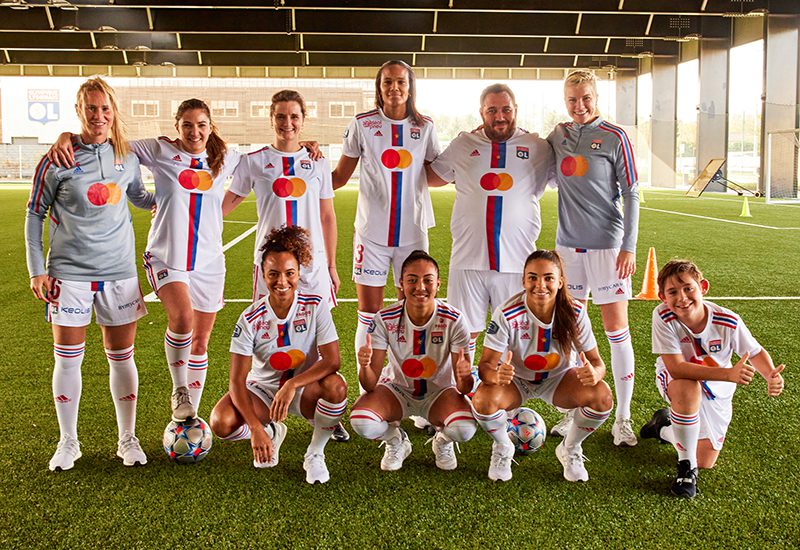
Mastercard’s strategy includes shining a spotlight on top female athletes to get more people interested in women’s sports. (Photo: Mastercard)
WALKING THE DEI WALK
Brands ramping up their DE&I efforts may be well-intentioned, but if they’re not putting their words into action, their claims are hard for consumers to perceive as genuine. For companies whose brand cultures and identities are heavily centered on inclusivity, in particular, efforts to go all in on women’s sports sponsorship offers clear evidence that they practice what they preach.
“A few years back, leadership really started to focus on gender parity within our company and said, not only do we need to look within, we need to be walking the walk from a commercial perspective,” says Giordano. “And as part of the sponsorship marketing organization, my colleagues and I made sure that we were taking that same approach to the diverse partnerships we want to be in and to be with brands that also believe in DE&I and thinking about the future. That has led us to really evolve our sponsorship portfolio and dig in even more on the women’s sports front.”
For Buick, walking the walk at this year’s NCAA March Madness tournament included deviating from its standard press strategy. With the recent rollout of the 2023 Buick Encore GX, the brand bypassed the auto media outlets it typically offers exclusive access to in favor of literally putting female-focused publications in the driver’s seat. The company not only gave women-centric media outlets the chance to drive the vehicle before anyone else, but also invited them to cruise to the tournament in one.
“You see these fans who are so savvy. They’ve had to really work through social media to get the content that they were looking for because they can’t find women’s sports in mainstream media.”
-Alison Giordano, svp-global sponsorships at Mastercard
THE NEXT GENERATION
While women’s sports sponsors are busy supporting today’s top pro athletes, many are of them are also ensuring that the next generation is set up for success by building and/or supporting youth programming, sometimes in conjunction with their sponsorship of a professional league, team or athlete.
Like IT consulting firm Cognizant, which in 2021 signed on as title sponsor of the LPGA’s Founders Cup, a professional women’s golf tournament that honors the 13 female golfers who established the LPGA Tour. The sponsorship strategy is themed around honoring the past, present and future of women’s golf (Lacy Maxwell Experiential handles). That includes elevating the event’s annual junior golf clinic by adding a dedicated STEM activation designed for kids and offering a brand ambassador program that allows young female players to learn skills from seasoned LPGA pros firsthand.
“It’s special to see all the kids on-site. The young girls look up to these players and see their opportunities are endless,” says Alexia Seijido, senior manager-experiential events and sponsorships at Cognizant. “And to look back at the progress that’s been made specifically in women’s golf and then connect it with progress that’s been made with women in technology is so rewarding.”
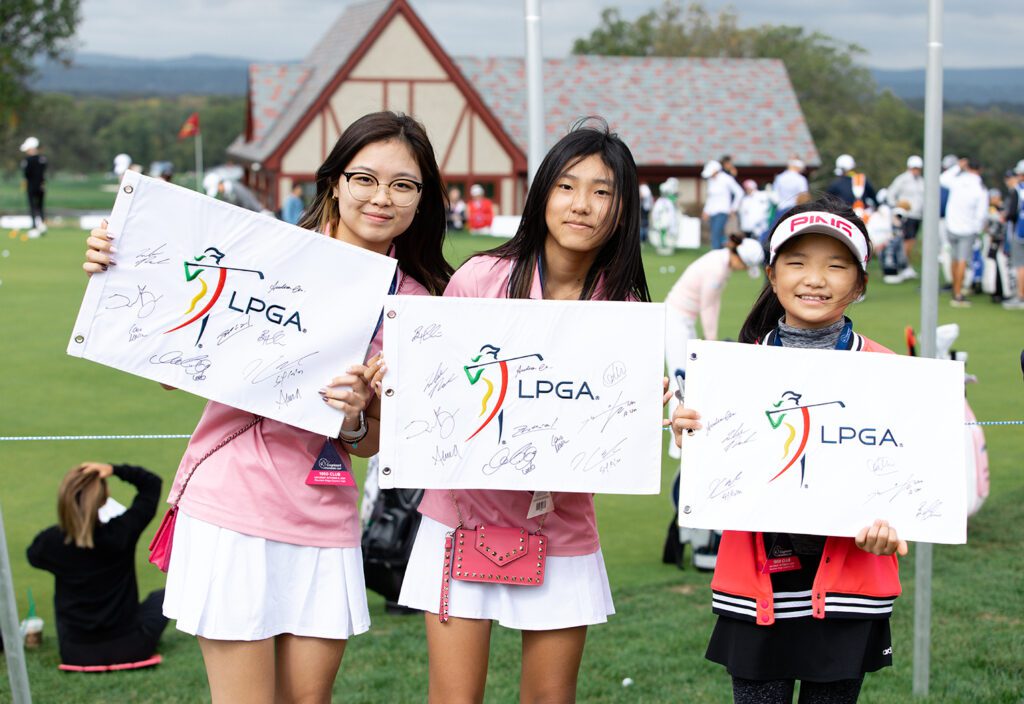
Brands like Cognizant aim to inspire the next generation of female athletes by engaging youth at tournaments like the LPGA. (Photo: Lacy Maxwell Experiential)
Mastercard dedicates a fair chunk of its sports marketing strategy to engaging young athletes. The brand is a founding partner, for example, of World Rugby’s Women in Rugby program, which focuses on growing youth participation in the sport. It also activates a Junior Reporter experience that allows school-age kids interested in sports journalism to accompany the brand to the NWSL Championship game and participate in experiences that demonstrate what it’s really like to be a sports reporter.
And in Buick’s case, its work at the national level to boost women’s sports has inspired its salesforce to support young female athletes at the local level.
“We’re really proud to be a part of this moment in culture—giving your brand a purpose like this,” says Russell. “The thing I love is that not only have we embraced this as a brand, our dealers have embraced it. They’ve been inspired by our national activation and gone and sponsored their local girls’ volleyball teams or softball teams. It’s [about] creating the emotional connection with our consumers and inspiring others to do the same and just moving the world forward in the right direction, one small step at a time.”
Featured photo credit: Alex Burstow/Arsenal FC via Getty Images
This story appeared in the Spring 2023 issue


